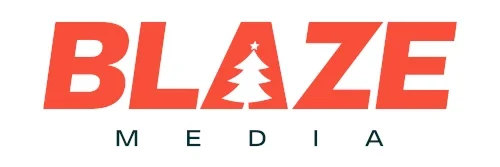If your business sells products or services to people from different countries to yours, or people who speak different languages, then you should definitely consider implementing some form of international SEO strategy.
SEO gets your business on the map; international SEO gets your business on the atlas! Become a global powerhouse or simply become accessible for different cultures in your area by incorporating this useful tool on your site.
Read on for more detail on international SEO or, if you want to know more about any of the SEO services that we offer, check out our website and get in touch to speak to a member of our SEO team!
What is international SEO?
International SEO works on the same basis as SEO, in the way that the end goal is to make your website more visible on organic searches.
However, as you may have guessed from ‘international’, international SEO focusses on making your website visible in foreign countries or to people who search in a different language to yours.
This will be important for your business if you want to access markets in other countries, or if you live in a country where a few different languages are spoken – like Belgium, for example, where their population speak a combination of Dutch, French, and German.
If you want to reach customers from around the world and are wondering if SEO is worth it then we can give you a resounding yes, it’s 100% worth it.
There are a few techniques that you can use to employ, which we’ll be going through in this blog.

Website structure
International SEO is primarily a feature of technical SEO. To help crawlers more accurately crawl your website and serve users with suitable pages in other languages, there are a few changes that you need to make to your website’s URL structure. Here are the four most popular ways to structure your website international SEO: subdirectory, subdomain, a new domain or a country code top-level domain (ccTLD).
To demonstrate, let’s use an example site that we’ll call ‘loremipsum.com’.
Subdirectory
loremipsum.com/us
Setting up a subdirectory on your site is a common way for smaller businesses to become visible in foreign countries without having to set up a whole new website. In this example, all content that’s international SEO is within a specific subdirectory folder.
Country code top-level domain (ccTLD)
loremipsum.us
This is the equivalent of building a new website to display in a different country. All countries have a different two letter country code extension assigned to them (such as uk for the United Kingdom, us for the United States and so on), and these codes correspond to the domain being registered in that country.
Subdomain
us.loremipsum.com
If you can avoid it, you should choose either a subdirectory or ccTLD and avoid using a subdomain. A site with a subdomain has far weaker SEO power compared to the original domain and the other two international SEO methods.
New root domain
loremipsumintheuk.com
While there are some websites that follow this method, it’s definitely unorthodox and comes with sub optimal SEO performance.
Using Hreflang
If you choose to use a subdirectory to optimise your website in different countries, you should include hreflang tags into your code to give Google a helping hand in identifying what language you are aiming for.
While Google will theoretically know what version of your site visitors are trying to access (because visitors will be searching in their target language), hreflang tags make it absolutely clear to Google that your pages are available in more than one language to prevent them both cannibalising their SEO potential.
Hreflang tags contain information on what translations of your pages are available and in what country they are trying to target. This is presented something like this for a subdomain targeting German speakers in Belgium:
href=“https://www.loremipsum.com/be” hreflang= “de-BE”
and like this for Dutch speakers in Belgium:
href=“https://www.loremipsum.com/be” hreflang= “nl-BE”
Localising content
Localising content doesn’t mean using local SEO methods, it means making sure that your website looks and works the best for the country and language being targeted.
One of the most important elements of your international site to take care with is the accuracy of the translation. Using auto translate tools might save you time and money, but they honestly aren’t quite there just yet. You should at least have a native speaker proof your content before it goes out so that any errors are spotted and can be fixed.
As well as translation, there’s also the more difficult task of localising your site for a target country’s culture. Some designs that work well in England might not work well in Russia, China, or Japan. Cultural localisation can also include translation as some words won’t directly translate well or accurately enough to maintain its native meaning.
The last thing you’d want to do is accidentally offend someone of a different culture with your design or content. Not only will you lose out on sales from foreign markets, but you could also create a problem that goes way beyond this!
On a less serious note, your site should similarly be localised for different devices (which it should be already!) because some countries prefer to access the web on phones, others prefer use computers and others prefer to use tablets.

Why redirecting users based on IP is bad
Google have gone on record to say that you should avoid redirecting users based on their IP a few times in the past.
The reason for this is that it can prevent Google from actually indexing your pages, meaning Google won’t even be able to show your website to its users.
Instead, take the time to adjust your site’s structure yourself through either a subdirectory or ccTLD, or a subdirectory if you absolutely can’t avoid it!
Complete SEO agency
If you have a business that serves customers in different countries then you should get in touch with our SEO team at Blaze Media who can ensure that your international SEO is in tip-top shape, encouraging the most profit possible from foreign markets.


